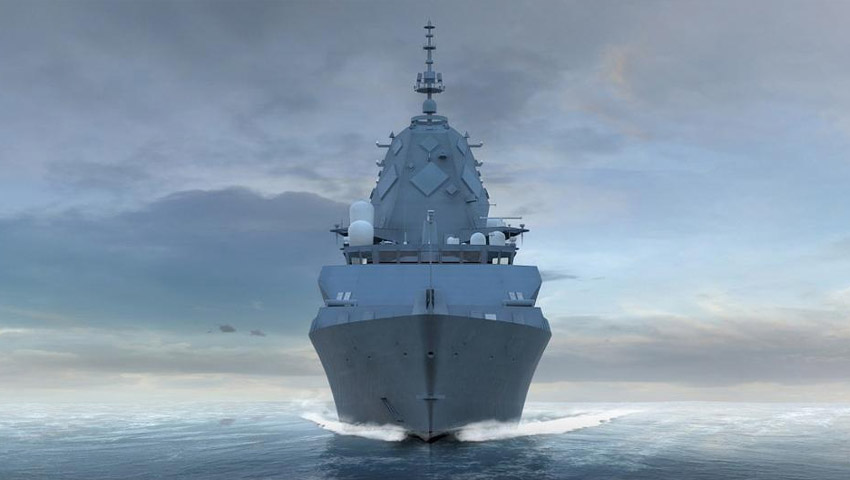Defence is working to minimise the impact of COVID-19 on the $35 billion SEA 5000 Hunter Class program, as industry and defence navigate the pitfalls of the new industrial ecosystem to deliver world-leading capability in a timely, cost-effective manner.
The SEA 5000 Phase 1 Hunter Class Frigate Project is one of the largest projects being undertaken by Defence, second only to the SEA 1000 Attack Class Submarine Project. It will provide nine anti-submarine warfare (ASW) frigates to replace the current Anzac Class fleet.
With a work trip to the UK ending early because of COVID-19, and after two weeks of self-isolation, Chen Xu is happy to be back at work. Her role as the commercial director for the SEA 5000 Phase 1 Hunter Class Frigate Project keeps her occupied, with plenty of challenges.
“Following the graduate program I worked on a number of projects, in various roles, but mainly in the maritime space. In August 2016 I was promoted to the SEA 5000 commercial director role – a fantastic surprise while I was still on maternity leave,” Xu said.
Beginning her career with defence acquisition as a graduate with the former-Defence Materiel Organisation, Xu now, after almost four years in the role, she is one of the longest-serving project team members, managing a team of 20 commercial APS staff and contractors. Together, they manage the acquisition contract for the Hunter Class frigates and the finances for the Ship Acquisition Surface Combatants Branch.
Xu said a former colleague described the long-term project as an “ultramarathon relay”.
“The nine frigates are being built in batches of three. The last three will not be completed and released into service until well into the 2040s. And when each frigate is finished they have to be sustained,” she said.
The team has been responsible for getting the acquisition “on contract”, from drafting the request for tender to contract signature in two years (very quick in comparison with similar projects here and internationally), and now managing and measuring performance against the contract.
Xu added, “This is not just a Defence project – this is a nation-building, Australian shipbuilding industry project. I work closely with the Australian Industry Capability team and support their events to engage Australian industry in these projects.”
In June 2018, the Commonwealth government announced BAE Systems Australia as the successful tender for the $35 billion SEA 5000 Future Frigate program.
The nine Hunter Class frigates will be based on the BAE Systems Type 26 Global Combat Ship currently under construction for the Royal Navy and will replace the eight Anzac Class frigates when they enter service beginning in the late 2020s.
The Hunter Class is billed as an anti-submarine warfare (ASW) centric vessel delivering an advanced ASW capability to the Royal Australian Navy at a time when 50 per cent of the world’s submarines will be operating in the Indo-Pacific region.
BAE Systems Australia announced that it had selected Lockheed Martin Australia and Saab Australia as combat systems integration industry partners, responsible for delivering the Australian designed CEAFAR 2 active phased array radar, Lockheed Martin designed Aegis combat management system and Saab Australia 9LV tactical interface.
Aegis is capable of simultaneously defending against attack from land targets, submarines and surface ships while automatically protecting the fleet against aircraft, cruise missiles and ballistic missiles.


